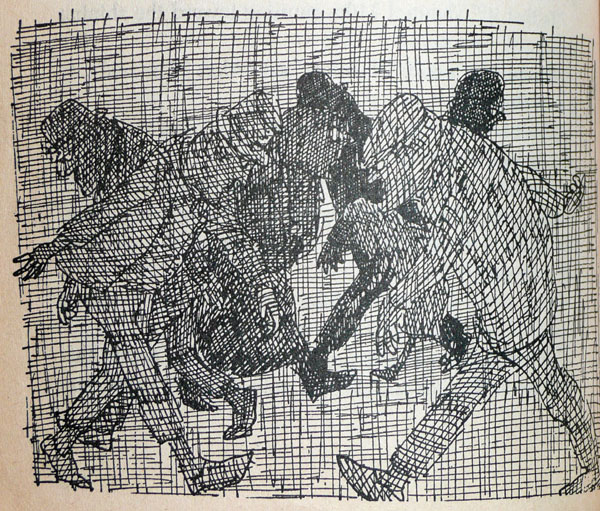The City Called Reality

[ Illustration by Jules Feiffer ]
From The Phantom Tollbooth, by Norton Juster:
“Many years ago, on this very spot, there was a beautiful city of fine houses and inviting spaces, and no one who lived here was ever in a hurry. The streets were full of wonderful things to see and the people would often stop to look at them.”
“Didn’t they have any place to go?” asked Milo.
“To be sure,” continued Alec; “but, as you know, the most important reason for going from one place to another is to see what’s in between, and they took great pleasure in doing just that. Then one day someone discovered that if you walked as fast as possible and looked at nothing but your shoes you would arrive at your destination much more quickly. Soon everyone was doing it. They all rushed down the avenues and hurried along the boulevards seeing nothing of the wonders and beauties of their city as they went.”
Milo remembered the many times he’d done the very same thing; and, as hard as he tried, there were even things on his own street that he couldn’t remember.
“No one paid any attention to how things looked, and as they moved faster and faster everything grew uglier and dirtier, and as everything grew uglier and dirtier they moved faster and faster, and at last a very strange thing began to happen. Because nobody cared, the city slowly began to disappear. Day by day the buildings grew fainter and fainter, and the streets faded away, until at last it was entirely invisible. There was nothing to see at all.”
“Hasn’t anyone told them?” asked Milo.
“It doesn’t do any good,” Alec replied, “for they can never see what they’re in too much of a hurry to look for.”
Now, to represent our reality, we’d need to take all those people in the above scenario and put them into cars — not a promising prospect for the built environment. I don’t know how a city can become more invisible than invisible, but much of what has been built in the age of the car might as well be.
